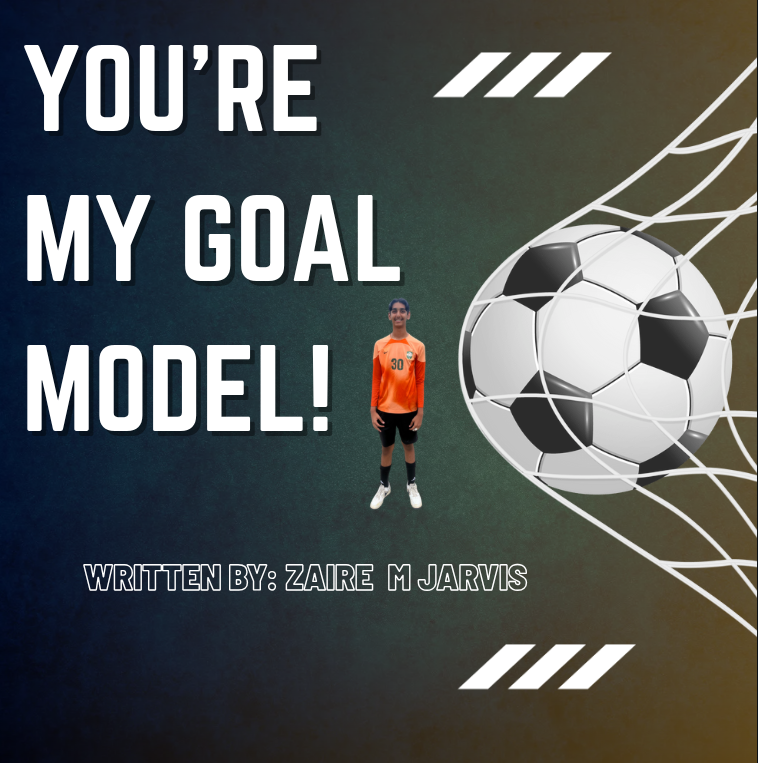In 2021, Simone Biles made history by stepping out of the Olympics Games after experiencing the “twisties,” or a loss of body awareness in the air, during her vault in the team final. In doing so, Biles drew attention to gymnastics, and more specifically, the mental struggles that gymnasts of all levels face. The Enloe gymnastics team is no exception.
“You can’t say you’ve been a gymnast and you’ve never gotten a mental block,” says Waithera Muindi, a junior who’s been doing gymnastics for eight years.
Gymnastics may be the closest humans ever get to flying. Watching the athletes twist and flip through the air is a breath-taking experience for the audience, while simultaneously taking the breath of the athletes when they actually perform the moves. But as much as gymnastics is a physical sport, it requires mental stamina as well. “I think it’s an empowering sport, because you develop so much not just physical strength, but mental fortitude to try all of these insane skills that any normal person would be like, what in the world?” remarks co-captain Mackenzie Millwood.
This mental aspect of gymnastics helps enable athletes to execute their movements, but it also has its downsides. Sometimes gymnasts experience mental blocks, which are disconnects between the mind and the body that hinder their ability to perform. Gymnasts are especially aware of the ways that the body and brain are interconnected. Millwood says, “It’s not just a mental thing, but oftentimes it’s a physical thing. Your mind wants to do it. You know that you can and you want to, but your body almost stops you.”
The high-stakes nature of propelling your body several feet in the air means that gymnastics takes a special level of concentration. Gymnasts must be aware of where they are in the air at all times, or else they risk serious injury. In Simone Biles’ case, she got lost in the air during her vault, making her landing very dangerous. Part of what can cause mental blocks is injury, or the threat of it. A bad injury can stall a gymnast’s progress for months, or even end their career. Enloe gymnast Zoe Russler says, “I think my last mental block was on my full turn on beam. I had a fall once where I overturned and I put my foot down on the wrong side of the beam, and I just fell straight to the ground. [Then] I couldn’t turn for a long time.” Mental blocks can come from trying new skills, or a bad fall on a skill they’ve had for years. Co-captain Amaya Crowder adds, “Whenever I’m learning a new skill, it’s kind of a struggle.”
So how do gymnasts conquer these mental hurdles? There is no formula to answer this question. As Coach Armand Kranick puts it, “Everyone’s a little different. They all have different motivations.” For some, they have an established process to get through challenges. “Throwing a skill,” as gymnasts call it, or attempting a skill despite still being scared or uncomfortable in order to overcome a mental block, can be almost terrifying. Muindi prefers to break tough skills down into baby steps to make them more manageable, saying, “Sometimes, if you’re too scared to throw a big skill, break it down so it’s less scary.” As Millwood puts it, “Your body just kind of freezes up. And that can be challenging to overcome, but with time and practice, it eventually works itself out. Then it feels really great when you finally overcome it.”
Another big help in overcoming mental blocks is support. Though gymnastics is an individual sport, meaning that each athlete competes by themselves and the only “team” aspect is in regard to scoring, coaches, teammates, and even friendliness with other schools adds to the welcoming atmosphere. “Your teammates are always there for you, and your coaches are always doing whatever they can to support you both mentally and physically,” says Millwood. This includes when gymnasts are struggling to learn or perform a skill. A big difference between gymnastics and other Enloe sports is that the team practices at a communal gym with other schools, leading to friendlier competitions. Crowder comments about her opponents, “There’s no reason to be rude. Just cheer for them and talk to them, because you know them and they’re your friends.” Many gymnasts train with a private, non-Enloe affiliated team as well, and sometimes their school opponents are actually their teammates on their other team, reducing the hostility between gymnasts from opposing schools.
Mental blocks aren’t the only mind game gymnasts play, as every gymnast has their own rituals to help them get in the right mindset to compete. For instance, “I like to be able to drive myself to the meet, because it just gives me time to get in the zone. But once I get there, I feel so much better once I’m with my team,” says Millwood. For Muindi, her ritual is just her normal daily routine, commenting “I kind of have a superstition. The night before, I keep my routine the same… I feel like if I do, then I’m gonna have a good meet.”
Gymnasts’ well-being hasn’t always been in the forefront. In the team final of the 1996 Olympics, American athlete Kerri Strug fell on her dismount, stumbling backwards and tearing two ligaments. She needed her second attempt in order for the US to win gold, so her coaches pushed her to do it again, ignoring her physical pain. Though she stuck her landing and won the US the gold medal, she immediately hopped onto one foot and collapsed onto the mat in tears. In today’s world, where Simone Biles stood up for the mental health challenges athletes of all sports face, pressure like this would not have been tolerated. To Millwood, Biles’ attention to her mental struggles is admirable, especially because “Olympic level athletes make it look so easy, so understanding not just what it took to get there but how they’re constantly overcoming those struggles makes you feel less alone in the sport.”
It’s obvious that gymnasts are physically powerful, but their mental fortitude is often underappreciated. All gymnasts are strong, but as Coach Kranick puts it, the Enloe gymnasts are “socially, physically, and academically a cut above the rest.”















Veronica Turner • Oct 27, 2024 at 9:28 PM
GOD Bless You Ms.Biles, U Do What Is Right By U, Not What World Wants, Tell Want Be, That’s All N Ur Business To Pay The ( WAY), Amen….
Veronica Turner.